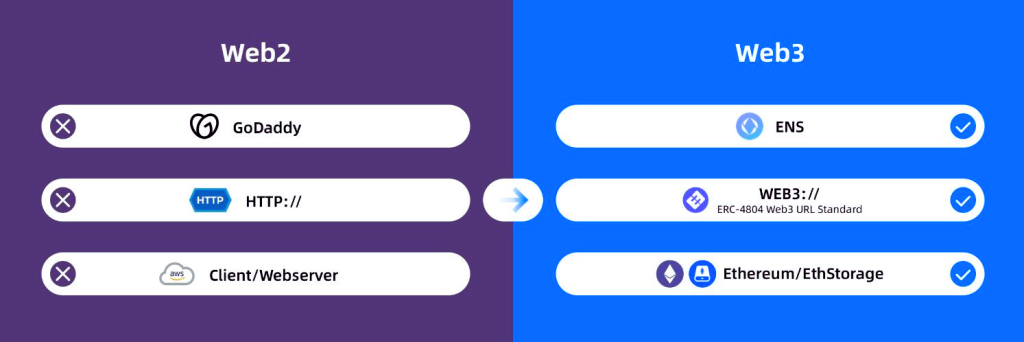Despite Ethereum recently launching the token standard ERC-4337, ERC-4804 has now come to light. As such, Web3 URLs are now available on the Ethereum blockchain, allowing internet users to access decentralized applications (DApps) front-ends and non-fungible tokens (NFTs) without worrying about centralized censorship.
Quick Takes:
- Ethereum recently launched a new token standard, ERC-4804, allowing Web3 URLs on its blockchain for accessing decentralized applications (DApps) and non-fungible tokens (NFTs) without worrying about centralized censorship.
- This solution involves implementing the html “web3://” (as opposed to “http://”), to access on-chain Web3 content directly.
- Approved on the mainnet on March 1, 2023, this standard can help blockchain platforms, DApps, and NFTs at risk of censorship.

About Ethereum’s New Token Standard
One major issue in the Web3 world is that, although many apps on the blockchain are “decentralized”, they heavily rely on Web2 servers for access. To launch such apps, most of the time, users need to access centralized servers, like GoDaddy, to get there.
Qi Zhou has been creating an Ethereum standard “Web3 URL to EVM Call Message Translation” to eliminate this issue since February 14, 2022. This new token solution involves implementing an “HTTP-style” URL to access on-chain Web3 content directly.
After finally receiving approval on the mainnet on March 1, 2023, Qi Zhou revealed the news about his invention on Twitter:
Thanks to ERC-4804 — which was also created with help from Ethereum researchers Sam Wilson and Chao Pi — internet users now have the option to type in “web3://” (as opposed to “http://”) in their browsers.
Pros and Cons of ERC-4804
Users can directly launch DApps like Uniswap or NFTs on-chain when typing in the new URL. The reason is that the creators found a standard allowing users to query the Ethereum Virtual Machine (EVM) directly.
Accessing websites through these methods is now possible, provided the content is stored on Ethereum, or at least a Layer-2 protocol.
This new standard can be helpful for websites and DApps at risk of censorship. Ones with Tornado Cash, for instance. Moreover, it can facilitate the integration of “dynamic data.” This includes features like leaving comments, giving likes, and interacting with website content.
Because of being an Ethereum native standard, it also expects to be compatible with other blockchains — making interacting with such networks easier.
One major downfall is that expenses need to be lower. Storage costs on Ethereum are super expensive on the mainnet. According to Zhou’s research, 1 Gigabyte of on-chain data costs roughly $10M. He hopes that Layer-2 storage solutions can help mitigate these steep costs.
Nevertheless, the potential impact of this development is immense. It could change how internet users interact with the World Wide Web forever.
Subscribe to the NFT Lately newsletter to receive news covering the latest NFT-related drops, releases, reviews, and more.



